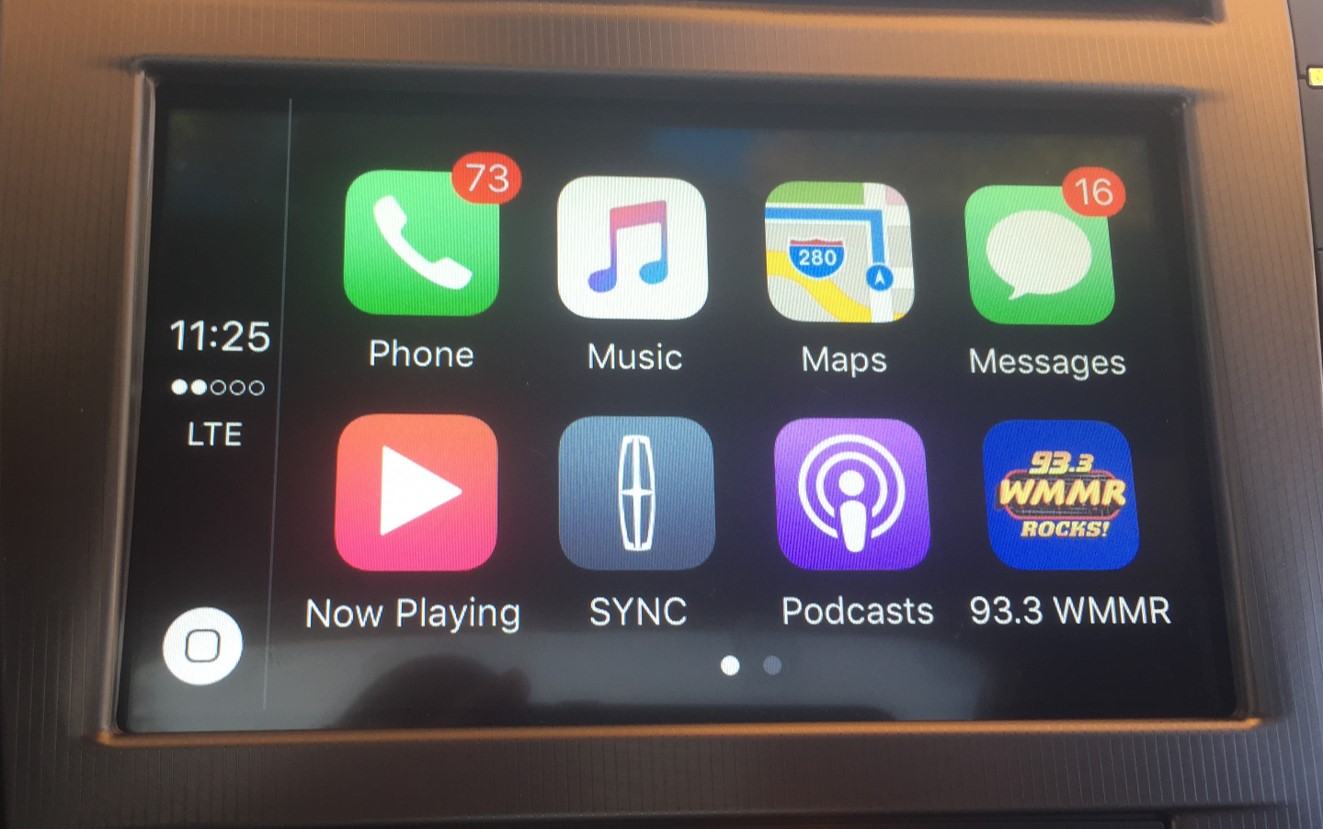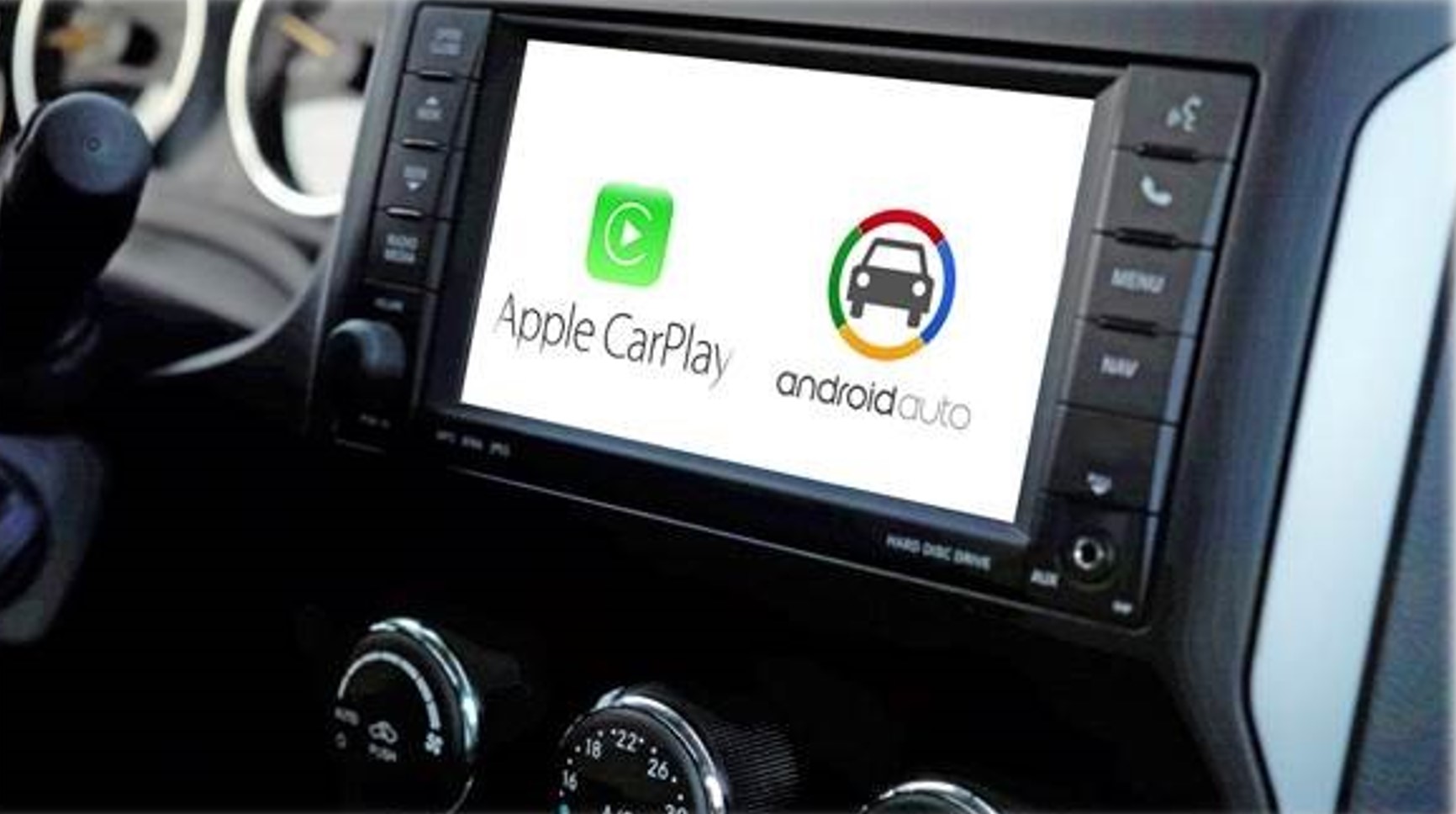
Eleven years ago this month, both Apple and Google threw a couple of monkey wrenches into the dashboard “drag race” then taking place among all the automakers, foreign and domestic. In their collective efforts to design the very best UX (user experience) in the car, all thirtysomething of them were failing epically. You can look up their pitiful report cards in the annual J.D. Power ratings used to score every aspect of the cars and trucks we drive. When it came to those ever-complex dashboards, most consumers were experiencing frustration and even anger about being able to perform once simple tasks in their vehicles – like tuning in a favorite station, for example.
The problems? Each auto manufacturer or OEM (original equipment manufacturer) was designing their dashboard systems with insufficient audience research. And each was also racing to achieve the best solution, leaving little-to-no uniformity in the way they worked. Back in 2014, you might somehow master the SYNC system in your Ford Focus. But fly to Orlando with the family for your Disney World trip and rent a, say Chevy Malibu or a Toyota Camry and you were back to square one. And there’s nothing more aggravating than pulling out of a rental car lot, managing driving directions in a new city, and you’re struggling with how to listen to the radio or connect your phone.
Enter Apple and Google almost simultaneously with their CarPlay and Android Auto solutions that matched up and mirrored the smartphone system of your choice. And all of a sudden, there was a comfortable familiarity when you got behind the wheel – familiar apps packaged similarly to their array on your trusty phone. And even better, if you jumped in your partner’s car or you grabbed a rental on business, you were almost instantly connected to the same old screen you were accustomed to seeing in your own vehicle.
Android Auto solutions that matched up and mirrored the smartphone system of your choice. And all of a sudden, there was a comfortable familiarity when you got behind the wheel – familiar apps packaged similarly to their array on your trusty phone. And even better, if you jumped in your partner’s car or you grabbed a rental on business, you were almost instantly connected to the same old screen you were accustomed to seeing in your own vehicle.
We’ve been tracking the growth curves of both Apple and Android’s efforts in the biggest study of core radio listeners on the planet, Techsurvey. With this year’s study just days away from being presented, I’ve been leaking interesting data points, like the one below;

Slow, steady, and impressive growth – especially for CarPlay. And how about those demos?
Over the last decade or more, Apple and Android’s victories over the OEMs’ various infotainment systems hasn’t stopped these intrepid carmakers from continuing to refine and design their proprietary systems. After all, they’ve been ceding a great deal of valuable branding points as well as reams of data to both of these “trillion dollar death star” tech companies, as marketer Evan Shapiro refers to massive companies like Apple and Google. It rankles auto execs to rely on a generic system like CarPlay or Android Auto when they could develop a proprietary solution on their own.
If only it was that easy. But in all this time, few car companies have truly achieved much in the way of individual success with their dashboard design and development efforts. And when you pay tens of thousands of dollars for a new vehicle, you should expect better.
While you can sympathize with the OEMs’ collective frustration, it doesn’t change the reality that many new vehicles are running multiple systems with myriad voices. It’s confusing, to say the least.
How many of us have risked serious collisions while fiddling with a touch screen, trying to get it to perform a task that seems well beyond the car or the driver’s capabilities? Allstate even based an ad in their “Mayhem” series around uncooperative touchscreens:
Many cars have as many as three voices that may – or may not – respond to a command: Siri (or “Hey Google”), Alexa, and the native system in your car, be it Mr. Lexus or Ms. Toyota. It’s like learning to speak a second or a third language – and there’s no Babbel or Rosetta Stone to shepherd you through it.
Perhaps the most stubborn of the OEMs is General Motors. Over the years, they have poured millions into their dashboard software, with user metrics they tried to sell to radio broadcasters, and later, with a failed direct purchase system in the car that enabled drivers to buy everything from gas to food to coffee while motoring around town – or the country. The latter “innovation” – an app called “Marketplace” – might have competed head-to-head with local and national radio sales reps. But GM couldn’t get it off the ground. After five frustrating years, GM killed “Marketplace” three years ago.
later, with a failed direct purchase system in the car that enabled drivers to buy everything from gas to food to coffee while motoring around town – or the country. The latter “innovation” – an app called “Marketplace” – might have competed head-to-head with local and national radio sales reps. But GM couldn’t get it off the ground. After five frustrating years, GM killed “Marketplace” three years ago.
None of these failed efforts has stopped the Detroit-based automaker – the biggest of the Big 3 – to stop trying. Also back in 2023, GM introduced its most controversial – and wrong-headed – dashboard debacle to date. As I blogged at the time, despite its popularity, GM opted to not include CarPlay in many of its models, especially EVs.
Even more puzzling is looking at the consumers buying and leasing electric vehicles – skewing younger. That’s right – many of the same drivers who are especially fond of Apple CarPlay.
I very well realize that mega-corporations the size of GM conduct more audience research than the average radio broadcasting company. But they’re either asking the wrong questions or they’re ignoring their findings.
The last two years in Techsurvey we asked how car buyers would react upon learning the vehicle they’re about to take out for a test drive isn’t equipped with CarPlay. While most say they’d be unaffected, one in ten says it’s a “deal-breaker,” while an additional one-fifth are bothered by the omission of CarPlay, indicating they’d think twice before pulling the trigger on a GM car or truck without it. And compared to last year’s survey, a growing number – now more than three in ten – is rankled by this dashboard decision.

One in ten?
In an increasingly dicey economy, no automaker can afford to have 10% of their potential deals go bad because of what has become a basic convenience feature for many drivers simply is not included.
And in the “Add insult to injury department,” a story broke over the weekend in 9t05Mac written by Chance Miller. According to their reporting, GM has killed the only CarPlay aftermarket kit a consumer could use to add it (and Android Auto) back to the company’s EVs.

Photo: GM Authority
Made by White Automotive, the upgrade was sufficiently complicated so it could only be installed by a GM dealership. And now the company is refusing to even do that. Here’s their statement:
“Aftermarket services that introduce features not originally designed, thoroughly tested, and approved by GM may cause unintended issues for customers. These issues could affect critical safety features and may also void portions of the vehicle’s warranty.”
White Automotive has discontinued the Apple CarPlay/Android Auto retrofit solution. Obviously, GM is adamant about making sure their customers cannot get a feature they love.
A publication called GM Authority polled their readers – obviously P1s of the company. And a whopping 88% of them called the lack of CarPlay a “dealbreaker” in a listener poll.
Piss off the audience at your own peril. In what is already shaping up to be a challenging year, GM is holding fast to making its customers buy their preferred dashboard system.
This is not going to end well.
In tomorrow’s post, more new insights from Techsurvey 2025 – it’s a look at how advanced dashboard systems are eroding radio’s “king of the car” reputation.
Originally published by Jacobs Media








